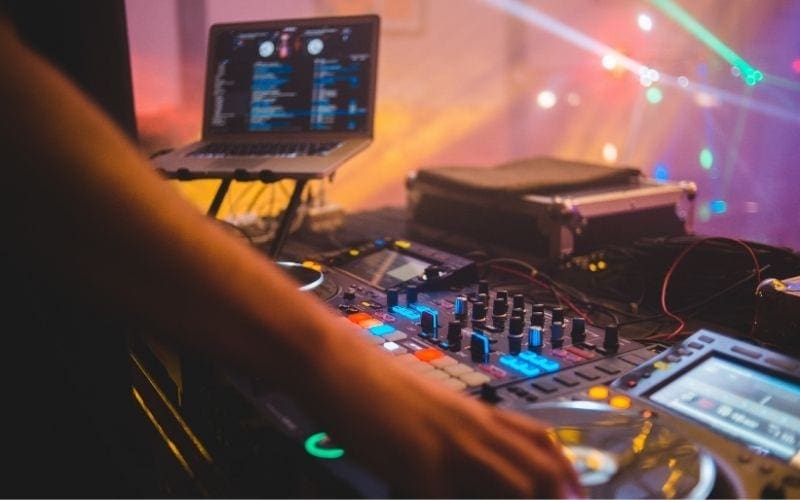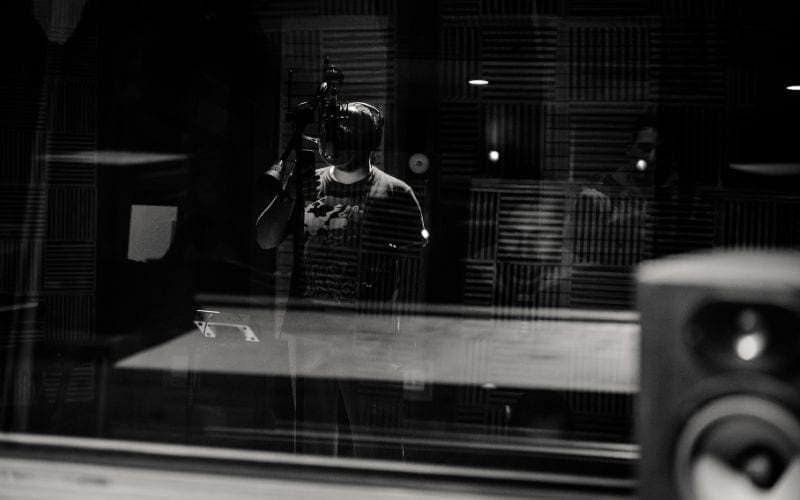
Trap is a genre of music that, in recent years, has worked its way into many other genres. Various pop, hip-hop and rap artists and producers incorporate trap beats into their music, and its popularity has grown exponentially. In this article, we will talk you through what trap beats are, trap music components and how to make a trap beat.
What Is A Trap Beat?
A Trap beat is the backing track of Trap Music, which is a sub-genre of Hip Hop. Trap music features rolling kick and bass sounds alongside melodic riffs, processed vocals and shuffling hi-hats. The crudest way to understand the difference between Trap music or trap beats and modern or old school Boom Bap Hip Hop and Boom Bap trap beats is the use of pre-recorded samples.
Hip Hop originated as a sample-based musical genre where DJs chopped samples from released music and put them in a new sequence for an MC to rap over. Trap music, on the other hand, utilises original sounds specifically produced for the track. Producers will generally create bespoke rhythmic and melodic patterns for each song with the use of little or no pre-recorded sample.
So, is there a usual beat trap song BPM or Trap beat tempo? The tempo generally falls between 130 – 170 BPM. This fast metronome allows rappers to either follow the fast pulse of hi-hats or feel the groove in half tempo and follow the kick/bass groove. Another distinct factor is the Roland 808 drum machine-type kick, which is the distinct bass and snare sound heard in countless tracks. Check out this useful article for further information about the TR 808 drum machine.
The kick sound usually carries pitch information in order to create the signature trap bass wobble. Producers such as Zaytoven and Metro Boomin are famous for their tight-sounding low end, using pitch bend effects on the kick and bass to create the Trap sound. Generally, Trap music is identified by the use of aggressive hi-hats and cymbal sounds. The syncopation and sound character of hi-hats can be heard in the majority of popular Trap beats.
Type Of Trap Beats

Before we dive into the details of how to make a Trap beat, we need to understand the different types being used in mainstream music. A quick disclaimer here: these types overlap each other and can be viewed as subjective. However, the aim is to identify the unique sounds which make them distinctive.
Hard Trap Beat
Hard Trap beat is one of the most common types of trap beat style in popular music. Producers such as Mike Will and London On The Beat are some of the key players in this particular style. Hard Trap beats contain fewer melodic elements and are more rhythm focused. These are generally slow in the groove but aggressive in the nature of sound choices. Kick, bass, hi-hats and snare usually take over. Hard trap beats consist of rolling bass and kick sounds in order to evoke high energy. Most commonly, these beats are used for battle rappers and diss tracks. A great example of a is Eminem’s track ‘Ringer’.
Guitar Trap Beat
This particular style has emerged in recent years, and was popularised by the late rapper Juice Wrld with his song ‘Lucid Dreams’. This style of trap beat utilises the guitar as the anchor point of the production. The guitar melodies are generally written in minor keys. Usually, they feature a clean electric guitar sound drowning in reverb and delays. Some famous artists working in this style of Trap music are 24k Goldn, Iann Dior, Kid Laroi and Machine Gun Kelly. The melancholic feel of guitar Trap beats alongside auto-tuned semi-sung vocals have been repeatedly hitting the billboard charts all over the world.
Dark Trap Beat
Similar to Hard Trap beats, the Dark Trap beat aims to utilise the aggressive nature of heavy low-end sounds. This particular style uses ‘dark’ or ‘angry’ riffs generally played on synth-like instruments. Cardi B’s song ‘WAP’ can be put into the Dark Trap beat genre due to the haunting melody repeatedly being played as a loop throughout the song. The style of music uses non-melodic, generally off-key hypnotic sounds to support the rap verses alongside the beat.
How To Make Trap Beats
“The Devil is in the details”
This quote truly sums up the Trap Beat production process. To an untrained listener, all trap music might sound similar. However, the tiny details and additions take a track from a basic tune to a mainstream track. You can attempt the following methods in various online beat-making platforms mentioned in this article.
Kick
Kick is one of the key elements of a trap beat, due to it being a sub-genre of Hip Hop. There is a wide variety of kick sounds that can be used for Trap beats, however, 2 types of volume envelopes are the most common ones. These are:
- Fast attack and fast release
- Fast attack and slow release
The latter is used to create rolling and pitched kick sounds. The most popular kick pattern in Trap music is built on a 4 or 8-beat measure. The main movement of the kick is on the 1 and 2 + beat:

However, after every few bars, a tiny movement of the kick can help create further interest in the beat. A sine wave with a short attack and long release alongside a click sound can also provide an 808 replica sound for Trap kicks.
Snare
Snares in contemporary rap music generally sit on the beat 2 and 4 of each bar:

That is mostly the case in Trap music, with some additions such as odd snare hits on 2+ or 3+ (depending on the lyrics at certain bars during the song):

The snare sound is a short percussive sample generally extracted from the Roland TR-808. It can also be replicated to sound like it. Some producers add pitch information such as the key of the song or the vocalist’s timbre to add music to the snare sound. The low end is removed from the snare sound in order to keep the space free for kick and bass.
Hi-Hats
The hi-hat sound is generally similar to the Roland TR-808 hi-hats (closed and open sounds). You can create the sound by adding a short attack and releasing hi-hats with a shaker to get that signature 808 sound. The pattern of hi-hats is very diverse in Trap music, and producers tend to be free and creative when it comes to hi-hats.
A starting point would be to add hi-hats sound on each beat division on the grid:

The next step is to carve out the pattern by removing certain hi-hats until you are happy with the pattern.

You can quantise the hi-hat pattern by 16th, 32nd, 64th or even smaller grid sizes to give a certain groove or movement to the beat. Another interesting method is to use 1/12th or a triplet feel to the hi-hats in order to create ‘Polyrhythms’. Finally, change the velocities of each hit in order to replicate a human performer playing hi-hats live:

This will add further dynamics to the track.
Bass
Bass is an important feature of Trap music. Generally, the bass sound is added to the kick as pitch information rather than having 2 separate sounds. However, some producers will add another layer of bass to complement the kick and create interesting grooves. The bassline carries a minimal approach to notation and usually consists of looped notes supporting the beat. The sound is a combination of sub-bass alongside an octave above the sub-frequencies to create a ’round’ bass sound.
Melodic Ideas

Trap beats usually contain a repetitive melodic idea. The melody can be played in the form of guitar chords or a riff. This is achieved with synth sounds or piano/keyboard in Dark Trap beats. The melodic ideas are generally based around minor keys or even diminished chords in order to create darker vibes. In Guitar Trap, the melodic ideas are slightly brighter sounding, yet stay in minor keys for a melancholic feel.
Rolls, Risers and Transitions
Finally, the details lie in the transitions, rolls and risers. Transitions are the audio bridges in between various sections of a song. The creative use of rolls and risers can enhance the impact of any Trap beat. Some producers have used ‘strip silence’ for added impact to the next section. Another way is to create a frequency filter on the last beat of a bar for the riser. You can also create snare patterns on the last bar of each section to indicate to the listener that a new section is coming. The use of wind or ambient sound effects as a transition can also be an effective addition to section change. Automating pitch up or down at the last beat of a bar can also provide further interest in a track.
Trap Beat Maker
Alternatively, you could use a trap beat-making programme such as Boomy.
Boomy is an online trap beat maker that enables users to create their own beats. It offers a wide range of features and tools, including a library of samples and loops, a drag-and-drop interface, and a range of effects and mixing options.
It also allows users to collaborate with other producers online, and share their beats with the world. Boomy is a great tool for aspiring producers, as it allows them to create their own beats without the need for expensive equipment or software.
Free Trap Beats
Click here for free trap beats download as well as trap beat instrumental!
You can also find a lot of trap beats on YouTube which have been inspired by current artists, such as:
Trap Type Beat Lil Baby
Trap Type Beat Future
Final Thoughts
So, there you go! Following the above guidelines will very quickly allow you to make Trap beats. As in any musical genre, the best method is to create as many tracks as possible whilst listening to the top producers for creative ideas. I hope the above information is helpful and inspiring for you to start making Trap beats. You can search for BPM to understand more by using the BPM Tapper tool on Music Gateway. Try it today.
For musicians and producers an online metronome tool is essential when recording, try Music Gateway’s online metronome tool here.













